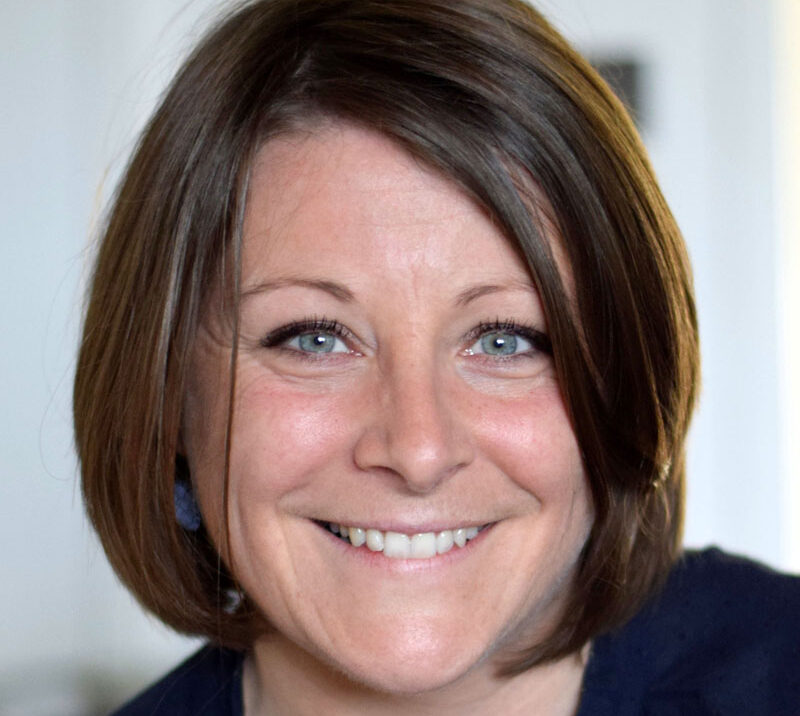Marie Morille: megastrategic nanoformulation
Researcher at the Charles Gerhardt Institute (ICGM) and lecturer in the galenic pharmacy and biomaterials department at the University of Montpellier, Marie Morille conducts strategic research into the formulation of biotherapies. This has earned her the IUF prize in 2022, after being awarded an ANR junior prize in 2020.

When Marie Morille talks about her research into nanovectors and biotherapies, it sounds like something out of science fiction. Injecting microparticles that carry nanoparticles containing messenger RNAs around the body... This fundamental research at the Charles Gerhardt Institute(ICGM) tells the story of the medicine of the future and the formulation of tomorrow's biomedicines. One of its fields of research is the treatment of osteoarthritis by cell therapy. Injected into the joint, stem cells can differentiate into cartilage cells to repair the cartilage. The challenge is to control this differentiation.
How is this achieved? Thanks to a complex system based on collagen microspheres, which act both as a support for stem cells and as a reservoir for nanoparticles containing nucleic acids that control differentiation. His work in this nanometric mechanism is firstly to develop efficient nanovectors to enter cells, then to modify the particle surfaces to control their attachment and the timing of the release of these nanosystems. And while proof-of-concept is on the horizon, " this research is still very fundamental ", admits the nanoformulations expert.
Biomedicine's new mascot
This work is the logical follow-up to her post-doc at the Institute of Regenerative Medicine and Biotherapies(IRMB), which preceded her recruitment as a lecturer at the University of Montpellier in 2012. This was the opportunity to obtain initial results on cartilage repair, as part of an Inserm transfert. The researcher optimized the formulation of a protein used to promote cell differentiation into cartilage, a result patented in 2012. The convincing results tested on mice led to an application a few years later by the Normandie Biotech company. " The treatment was used in veterinary medicine on racehorses. It was a pleasant surprise to see such a rapid application," says Marie Morille.
His first research on nanoparticles dates back to his PhD. His aim was to promote the accumulation of these vectors, used to transport nucleic acids (DNA), in cancer cells, the target of treatment. " We decorate the surface of these nanoparticles with polymers to ensure their stability after intravenous injection. The system then has a greater chance of accumulating in tumours through an effect known as EPR (enhanced permeability and retention effect), which is based, among other things, on the imperfect nature of the blood vessels irrigating tumours ", explains the researcher.
Interest in this mechanism, which was the focus of her thesis between 2006 and 2009, has since waned. " Although the effects were well demonstrated in mice, they were not conclusive in humans ", notes the researcher who is now working on biomedicine's new mascot, extracellular vesicles (EVs). Secreted by cells, these vesicles are ideal nanovectors for delivering drugs, as they are naturally equipped to enter cells. They also hold promise for applications in regenerative medicine, thanks to their intrinsic anti-inflammatory properties. " We just need to tame them," says Marie Morille.
Highly competitive sector
His new research project involves finding a way of stabilizing them so that they can be used for treatments. " For example, by modifying the surface of these vesicles with polymer molecules, we aim to preserve their physical integrity and biological activity. We have even developed freezing and lyophilization methods to facilitate their use, and we are currently testing, in collaboration with the Institut de recherche en cancérologie de Montpellier (IRCM), we are currently testing radiolabeling to track them in the body. We're also looking into their use in the delivery of another type of biotherapy: intracellular antibodies, also in collaboration with the IRCM ", explains the researcher.
Initiated in 2016, this research has enabled her to obtain ANR junior funding in 2020 and become an IUF (Institut Universitaire de France) laureate in 2022. This time, with a project on lung treatments. Unlike synthetic nanovectors, Ve has the advantage of not sticking to mucus. A property that enhances treatment efficacy. " Thanks to a significant reduction in my teaching load, this IUF gives me the time to work, which is essential because research is moving fast in this highly competitive sector ", admits the lecturer, who has not forgotten the teaching component of her work.
California'dreamin
With two major pedagogical projects: the creation of an equipment platform dedicated to nanoparticles as part of the BioOc program, a winning project in 2022 of the France 2030 "skills and professions of the future" call for expressions of interest; and her participation, as pedagogical co-leader, in the Immune4Cure University Hospital Institute project led by C. Jorgensen. And as if all that weren't enough, Marie Morille is preparing for a mobility year in September at the University of California Davis in Sacramento. " It' s a pivotal time in my career, very busy but also very exciting," concludes the indefatigable Marie Morille.
